ESOPs, Equity, and Ownership: How to Keep Talent and Investors Aligned
Fueling Startup Loyalty and Performance Through Smart Equity Planning
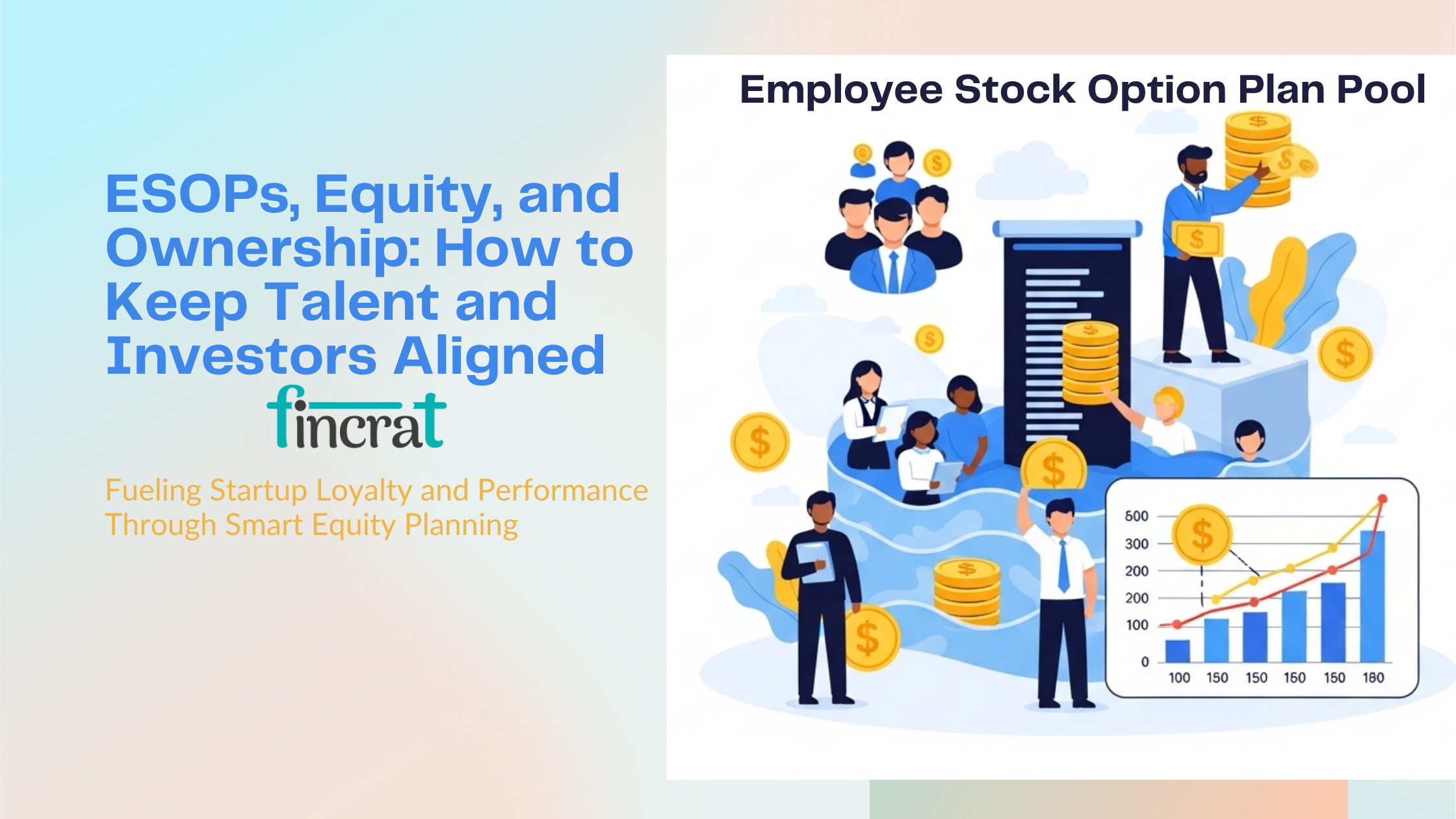
Startups operate in a world of resource constraints. You’re competing with Google and Amazon for talent, but you don’t have their perks or paychecks. So how do you bring exceptional people on board—and keep them? One word: equity.
Equity aligns incentives, fosters ownership, and builds loyalty. And the tool that brings equity to life inside your company is the Employee Stock Option Plan (ESOP). It’s more than a financial instrument—it’s a cultural and strategic cornerstone that can make or break your startup.
This post unpacks everything you need to know about ESOPs, dilution, pro-rata rights, and how equity impacts your cap table in exit events. Whether you're a founder planning your first hire or preparing for Series B, this guide will show you how to use equity to keep your team and investors aligned.
What Is an ESOP Pool?
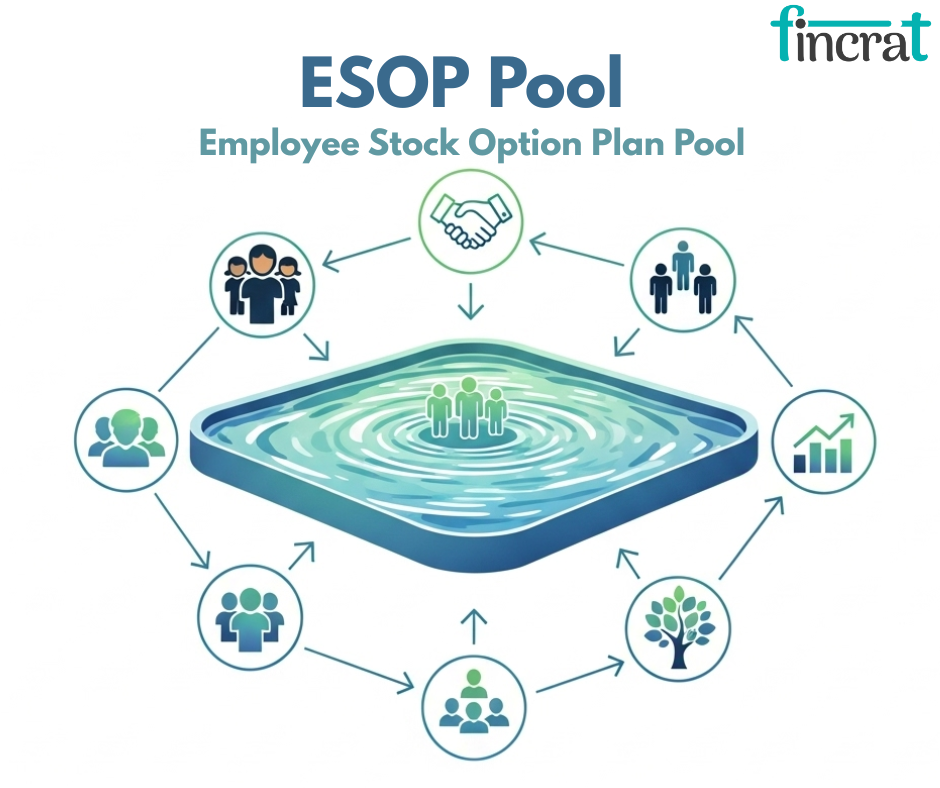
- An ESOP Pool, or Employee Stock Option Plan Pool, is the reserved amount of a startup's overall equity held back for the express purpose of awarding stock options to employees, advisors, and consultants.
- It enables employees to obtain ownership in the firm in the long term, linking their efforts to the long-term prosperity of the startup.
- Normally between 10% to 20% of the firm's equity (particularly by Series A time), the pool is used as an early-stage firm's strategic incentive tool that cannot compete on wages.
- The ESOP pool stock options are typically governed by vesting schedules—commonly 4 years with a 1-year cliff—which ensure employees receive their equity as they add value over time.
Why Startups Need an ESOP Pool
Startups, especially in their early stages, often can't afford to offer high salaries to attract top talent.

The ESOP pool helps bridge this compensation gap by offering equity-based rewards, giving employees a direct financial stake in the success of the company.
- Attract Talent:Equity makes a startup role competitive with larger companies by offering long-term financial upside.
- Retain Employees:Through vesting schedules (typically 4 years with a 1-year cliff), ESOPs encourage long-term commitment.
- Drive Performance:Employees become co-owners, fostering a culture of accountability and motivation.
- Align Interests:With equity, employees are invested in the company's growth and valuation, aligning their goals with those of founders and investors.
ESOP Pool Sizes by Funding Stage
- Seed stage: 10–15% of the total equity
- Series A: Expanded to 15–20% before the round closes
- Later stages: May shrink if most of the pool has been allocated
- Most investors require startups to create or expand an ESOP pool before investment, which means founders bear the dilution, not investors.
Managing the ESOP Pool Effectively
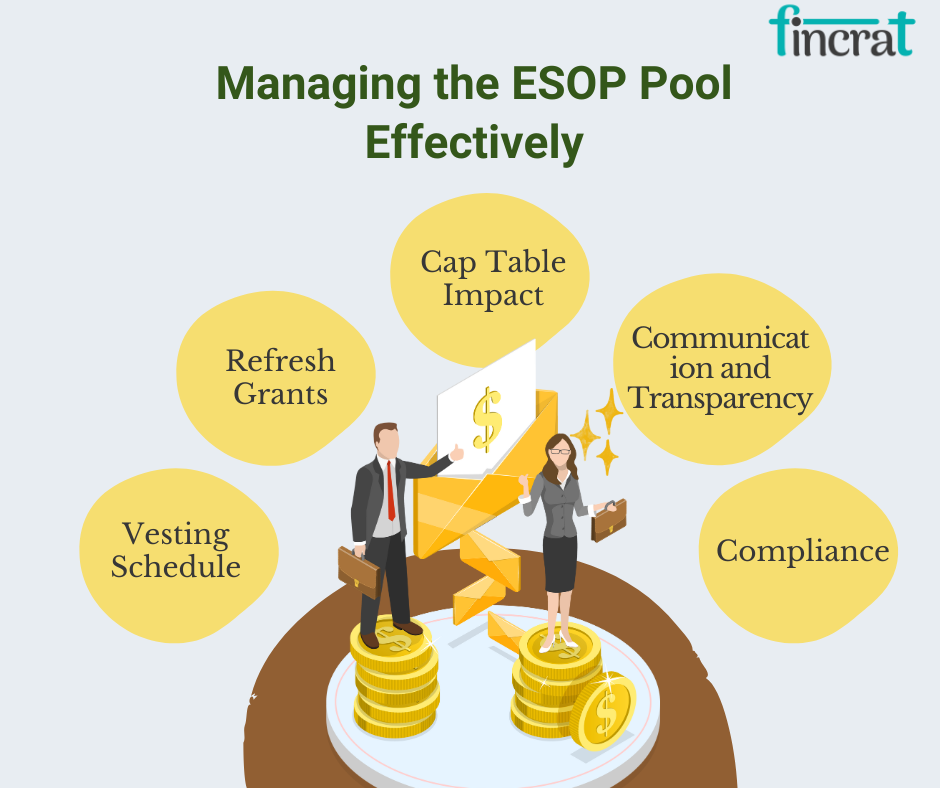
- Vesting Schedule:Standard: 4 years with a 1-year cliff , Employees earn shares gradually, starting after the first year
- Refresh Grants:Additional grants may be needed to retain senior staff during growth or post-funding rounds.
- Cap Table Impact:Always plan ESOP pool pre-money during negotiations so it’s reflected accurately in dilution modeling.
- Communication and Transparency:Clearly explain how stock options work, their potential value, and liquidity scenarios to employees.
- Compliance:ESOPs require legal documentation and often board approval; they should be managed via tools like Carta, Pulley, or Eqvista.
Dilution and ESOPs: The Founder’s Dilemma
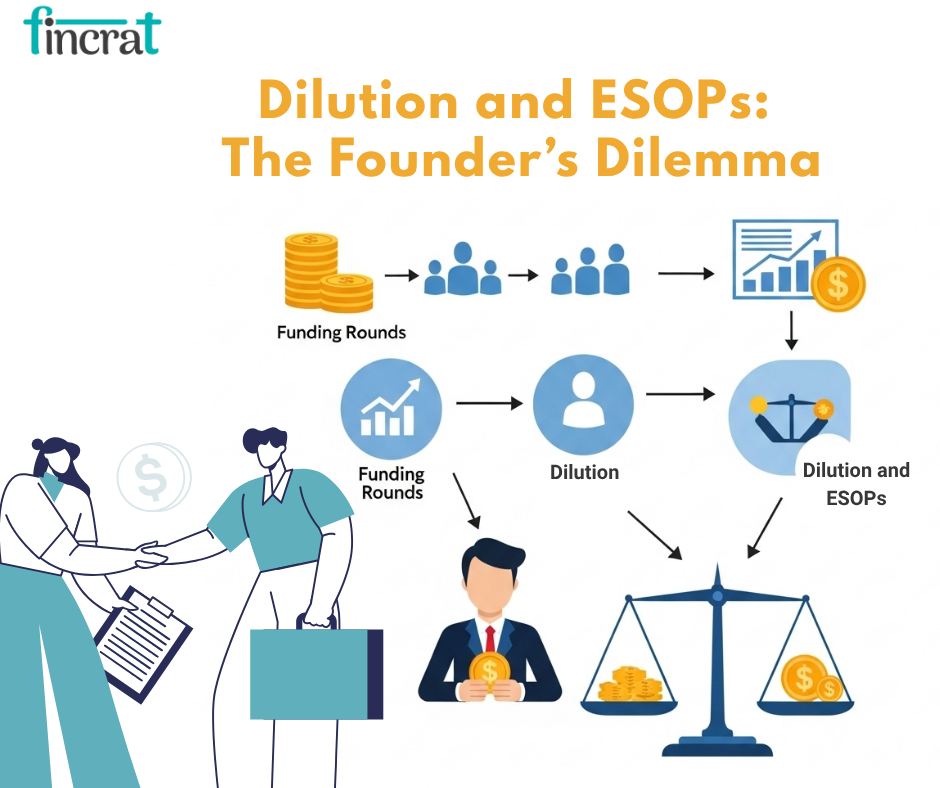
- Dilution results when a startup sells new shares to raise capital, which dilutes the ownership percentage of current owners — including founders, early employees, and in some cases, early investors.
- Though dilution is an inevitable aspect of growth in a startup, learning how it happens across several rounds of financing is important to forward planning, particularly in ownership, control, and exit scenarios.
- As per CB Insights, more than 60%-70% of startup founders have less than 20%-30% equity at the time of exit because they get diluted in multiple rounds.
Dilution Over Multiple Funding Rounds
Each new round brings in more investors, more shares, and more dilution. Understanding how ownership changes is key to maintaining founder control and employee motivation.
In every funding round (Seed, Series A, B, C, etc.), new shares are created and issued to investors. As a result:
- The total number of shares increases
- Existing shareholders' percentage of ownership decreases
- The value of the company (valuation) usually increases — so despite owning a smaller slice, the slice may be worth more
Key Concepts to Understand
- Pre-Money vs Post-Money Valuation:Investors negotiate based on post-money ownership, so larger ESOP pools or higher raise amounts mean greater founder dilution.
- Dilution Is Not Always Bad:If each round significantly increases valuation, the value of your equity increases despite owning a smaller slice.
- Pro-Rata Rights:Early investors may have the right to maintain their ownership percentage by investing in later rounds — this can further dilute the founders.
- Anti-Dilution Clauses: Some investors include protections (especially in down rounds) that adjust their share price or ownership to avoid dilution, which can impact founders even more.
Controlling Dilution Strategically
- Plan ESOP pools carefully to avoid excessive dilution pre-funding
- Negotiate higher valuations based on strong traction and market data
- Limit the size of each funding round to what is necessary
- Use convertible notes or SAFEs in early stages to delay valuation discussions
- Maintain strong cap table discipline and track equity with software like Carta or Pulley
Pro-Rata Rights: Protecting Investor Ownership
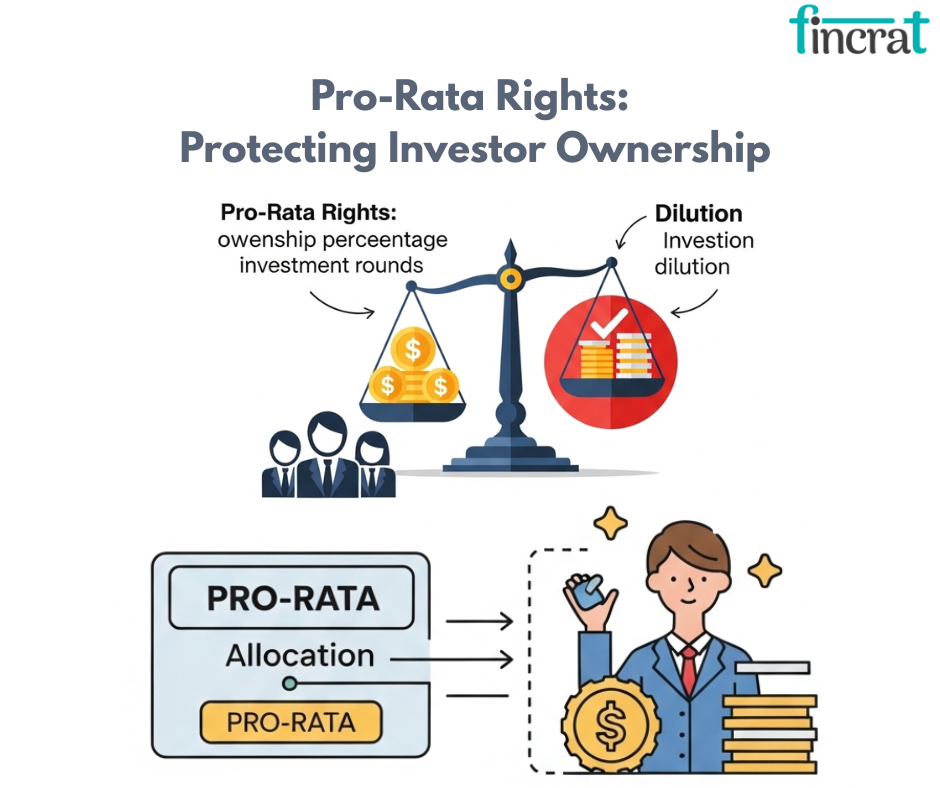
- Pro-rata rights — sometimes referred to as preemptive rights — are contractual rights that entitle current shareholders (usually early-stage investors) the right to join future funding rounds of a startup in proportion to their current ownership portion.
- The primary objective of pro-rata rights is to safeguard investors against equity dilution when the company issues more capital and new shares.
- In the case of startup capital raising, when the business goes through follow-on rounds of investment (i.e., Series A, B, or C), the business typically issues new stock to new investors.
- This automatically waterdowns the share percentages of the current shareholders.
- Pro-rata rights permit those original investors to buy a proportionate portion of these issued shares, allowing them to retain their share percentage.
How Pro-Rata Rights Work (Mechanics)
- Defined at the Time of Investment: Pro-rata rights are negotiated in the initial investment agreement or term sheet.
- Triggered by New Financing Rounds: When the startup raises more funds, the company must notify the investor with pro-rata rights.
- Option to Invest: The investor then has the opportunity to invest more money to maintain their ownership.
- Set Time Frame: There’s usually a short window (7–30 days) to exercise the right before the offer expires.
- May Require Additional Negotiation: If the new round is oversubscribed, enforcing pro-rata rights may require additional negotiation.
Final Thoughts: Equity Is Your Leverage—Use It Strategically
In the competitive world of startups, equity isn’t just compensation—it’s leverage. When used wisely, it becomes a powerful tool to attract world-class talent, keep your core team committed, and give investors the confidence that your company is built for long-term growth. But with that power comes responsibility. As a founder or operator, it’s critical to understand how ESOPs work, how dilution impacts ownership, and how to communicate equity value clearly to your team.
Treat your cap table like a living, strategic asset—because one misstep in planning or transparency can lead to mistrust, misalignment, and even the loss of key people. Managing your ESOP with precision, clarity, and fairness sets the tone for your company culture and paves the way for sustainable success. "In startups, cash is limited—but equity is limitless. Use it to build a team that believes, stays, and scales with you."

